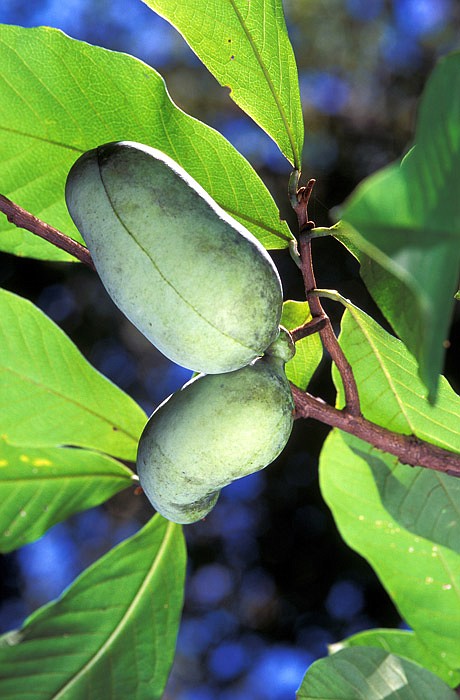Pawpaw is the largest native fruit in Missouri and continental United States. It is also known as "false banana" because its flavor and soft texture are similar to bananas.
According to Kentucky State University, pawpaws are very nutritious; they are high in protein and are the source of several amino acids, vitamin C, magnesium, iron, copper, zinc, phosphorus, calcium, manganese and more. It belongs to the custard apple family, or Annonaceae, with most of its members being from tropical regions.
Pawpaws can be consumed fresh or prepared in baked goods or ice cream. The fruit has been studied extensively, and several varieties have been developed. Kentucky State University and the University of Missouri have conducted research for a number of years, including the selection of most productive tree varieties. Check pawpaw.kysu.edu/default.htm and extension.missouri.edu to find all the information needed for plant propagation, establishment, maintenance and recipes. In Missouri, this tree is sold by various nurseries that include the MO Wildflowers Nursery in Brazito, the Missouri Department of Conservation-George White Nursery in Licking and Forrest Keeling Nursery in Elsberry.
Pawpaw can be propagated from seed. Seed is highly viable when maintained in cool and moist conditions. The seed requires cold-stratification to germinate, which means that seeds need to be exposed for at least six weeks at low temperatures (34-40 degrees F) in moist conditions. The fruit has the shape of a kidney and varies in size from 3 to 6 inches. The soft texture of the edible part of the fruit contains up to seven seeds. Selected varieties have fewer seeds and are larger. It may take six to eight years to produce, but some varieties may be more precocious.
Pawpaws are easy to identify - trees have very distinctive large, alternate leaves that are food for the larva (caterpillar) of the zebra swallowtail butterfly. The flowers are red-brown and hang from the tree as little bells and have the shape of upside down small tulips. They are pollinated by flies and beetles. Flowers form in May and June, and fruit matures in the fall. The fruit remains green until right before maturing, when it becomes brown.
This tree grows naturally in lower slopes, along streams and wooded bluffs, usually under shady conditions. It propagates from suckers, so it is not uncommon to find small colonies in wooded areas. It requires cross-pollination, so it is important to plant at least two trees. In gardens and farms, it also grows well in open, rich soil with good drainage. In Missouri, it is found scattered in almost half of the state.
Birds and small mammals prize this fruit, so it is not uncommon to see fruits suddenly disappearing, especially if raccoons or opossums find them. Pawpaw's scientific name is Asimina triloba, so it should not be confused with papaya (Carica papaya), which is also known as paw paw in Jamaica and other English-speaking countries.
It is usually consumed fresh, but because of its short storage life, the fruit or the pulp can be frozen for later use. The pulp is used to prepare sorbets, pies, pudding and other desserts. An easy-to-prepare sorbet recipe follows, and a cheesecake recipe can be found at nature.mdc.mo.gov/discover-nature/recipes/fruit-and-nut/pawpaw-cheesecake.
Dr. Nadia Navarrete-Tindall has been an associate professor and state native plant extension specialist for Lincoln University Cooperative Extension since 2008. She is the director of the Native Plants Program (NPP) and can be reached at by phone at 573-681-5392, by email at [email protected] or [email protected] or on Facebook: Lincoln University Native Plants Program.
Pawpaw sorbet
Preparation time: 15 minutes
Processing time: 20 minutes plus freezing
Makes: 6 servings
1 cup water
6 tablespoons sugar
4 tablespoons lemon juice
8 medium ripe pawpaws, peeled and deseeded
In a saucepan, combine water, sugar and lemon juice. Cook and stir over medium heat until sugar is dissolved. Cool slightly; transfer to a blender.
Add the pawpaw; cover and process until smooth. Add the mix to ice cream maker and follow ice cream maker directions. Freeze for 4 hours or until firm.
This same mix can be used to prepare popsicles.


